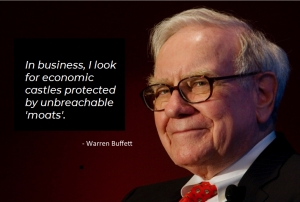
In the first article (series 1), we discussed about the problems maritime people grapple with each day, while the tech world sees the problems differently.
In this series 2 article, we will talk about the defensibility of maritime commerce, and how it is able to stand against the digitalisation and technological disruptive wave thus far:
Firstly, the Tech world, attracted by the huge promise in maritime business, and aided by the growing ecosystem that is meant to help maritime companies, somehow takes on a life of its own. It tends to take a direction that:
 Focuses on Explosive disruption: almost always so, tech startups are asked if their solutions will change the maritime world in a big way. Everyone wants that big bang or explosive disruption that completely turns business upside down. This often disallows the startups to ask smaller questions that will help them understand front-line people problems and gain an access into the door. (picture by iQonconcept)
Focuses on Explosive disruption: almost always so, tech startups are asked if their solutions will change the maritime world in a big way. Everyone wants that big bang or explosive disruption that completely turns business upside down. This often disallows the startups to ask smaller questions that will help them understand front-line people problems and gain an access into the door. (picture by iQonconcept)
Ignores Compressive disruption: few have been encouraged to attempt small, gradual and what is generally known as ‘compressive’ disruption. Actually, an asset-heavy and process driven industry like maritime tends to be seduced by its past, and thus is more likely to fall prey to smaller changes than big ones. These compressive disruptions, as research found, can be as deadly.
Guided by general trends: many startups follow general trends. These trends may not represent the maritime at large. For eg. most non-maritime people recognise the container segment, for which most research and publicity are concentrated on. They miss out on big segments like the Tankers and Bulkers.
Not engaging maritime broadly: even the ecosystem is sometimes guilty of not engaging the maritime industry broadly. Understandably it is a very broad industry, and so people tend to focus on the ones they are familiar with. This, however, limit innovation, impact, scale, perspective and opportunity.
Celebrates ‘jumping serial-entrepreneurs’ and hype: there are what I observe as ‘professional pitchers’ who are present and good in multiple pitching events. They serve the ecosystem hype, but I wonder if their products or solutions actually serve the industry, as I see these people get funded and move from one startup to another.
 On the other hand, maritime commerce and the companies that operate it have thus far stood firmly against the tide of digitalisation and technology disruption. Ironically, it has built itself a moat that is hard to cross. What exactly is this defensibility that helps maritime commerce stand against the tide? I attempt with some factors here: It does pay to keep these in mind when we can take steps to help maritime make changes:
On the other hand, maritime commerce and the companies that operate it have thus far stood firmly against the tide of digitalisation and technology disruption. Ironically, it has built itself a moat that is hard to cross. What exactly is this defensibility that helps maritime commerce stand against the tide? I attempt with some factors here: It does pay to keep these in mind when we can take steps to help maritime make changes:
Business model still robust: maritime commerce which enables seaborne trade is still a viable business model vis-à-vis land and air transport. It is inconceivable that the maritime industry will lose out in a business that rides on earth surface of > 70% water.
Relationships still matter: relationships permeate throughout the network of services that support the ship to run smoothly and efficiently. Promise of technology providing new efficiency or business models faces with both challenge and opportunity. I suspect the threat of (explosive) disruption tends to incite a reactive defence at the expense of digitalisation opportunity. Our approach should be one that recognises that importance and value of relationships, and introduces technology as an additional moat that they can build up to enhance their business defensibility.
Specialist skills and judgmental ability still valued: there are many specialist skills involved in the large and long maritime-commerce value chain, their judgments are continually required to reduce cost of risk and recovery. Until there are alternative models that are working, any suggestion to dis-intermediate these is simply not wise.
Fragmented industry supported by gatekeepers: I’ve explained in earlier articles how the maritime commerce becomes a labor-intensive industry with many services and people providing support around the ship and its shipment. These service providers which have built up an efficient system and process are now the natural gatekeepers to change and defenders of disruption. I will discuss more in the next articles on nature of maritime commerce and the many inherent problems it has to overcome.
This is my small bit in demystifying maritime commerce and innovation, please share this article if you find it helpful. Thank you!
Author’s LinkedIn Profile:
<script src="//platform.linkedin.com/in.js" type="text/javascript"></script>
<script type="IN/MemberProfile" data-id="https://www.linkedin.com/in/chye-poh-chua-bb022954" data-format="inline" data-related="false"></script>
I invest, mentor and grow a group of startups which specialize and focus on creative maritime commerce innovations and solutions via digitalization, data-science applications, work tools, etc.
I believe for now, ShipsFocus’ maritime venture studio model is an appropriate one to most efficiently and effectively overcome the BIG innovation conundrum.
